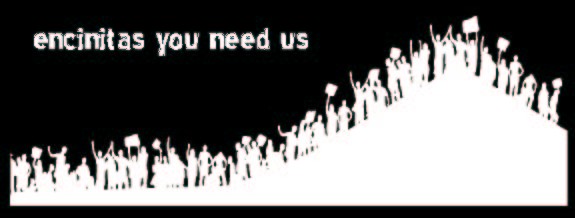From Bangkok to Grand Rapids to London
The projects profiled below represent a wide array of individuals and organizations working to build community and create a better future for all. With a focus on co-creation and developing a sense of belonging within communities at the local level, these initiatives showcase the commitment and creativity required for establishing a commons-based society. Read on to learn about The Rapidian, a community-driven, hy- perlocal news source located in Grand Rapids, Michigan; 350.org, a global, grassroots movement dedicated to solving the climate crisis; and more.The Oregon Commons, a volunteer-driven nonprofit organization, inspires appreciation, stewardship and advocacy for the Oregon commons—“the gifts of nature and civilization shared across generations.”
City Repair Project, also based in Oregon, employs artistic and ecologically oriented place making strategies. City Repair inspires people to understand themselves as part of a larger community, participate in decision-making that shapes their future, and realize their creative potential.
Down the cost in Point Reyes Station, California, West Marin Commons aims to enhance, protect, and illuminate our shared environment. The organization creates space for spontaneous sociability and community activities, including sharing rides, garden produce, tools, and “household stuff.”
The Northwest Atlantic Marine Alliance, based in Gloucester, Mas- sachusetts, works to restore enduring marine systems. If we truly care about the health of our oceans, does it matter how, where, and when we fish? NAMA strongly believes it does.
Across the Atlantic, The London Orchard Project plants community orchards in London’s unused spaces. The initiative has many local benefits, including the promotion of fruit production within communities, the greening of London’s urban environment, the creation of wildlife habitats, increased biodiversity within city limits, and improved food security. It also helps Londoners rediscover the simple pleasure of eating organic fruit grown close to home.
[editor: Hard to believe Commons Magazine consistently omits mention of the cultural miracle that is the Transition Movement - a real leader worldwide and the group that initiated nut and fruit tree planting.]
350.org, founded by author Bill McKibben, is a global grassroots movement to solve the climate crisis. 350.org is well known for its online campaigns, grassroots organizing, and mass public actions—all of which are led from the bottom up by thousands of volunteer organizers in over 188 countries.
On the hyperlocal level, The Rapidian is a news source powered and published by citizen journalists in Grand Rapids, Michigan. It provides tools, training, platforms, and support to empower neighborhood residents to report community news from the inside out. The Rapidian promotes inclusiveness, civility, and ethical reporting as the foundation for increasing civic engagement.
The School of Commoning utilizes the global communication and information sharing capacities of the Internet. As an online resource for people who want to learn about the commons, the School offers a bank of resources and educational programs to commoners around the world.
Located in Sacramento, California, the Sol Collective provides arts, cultural, and education programming that supports social justice and empowers youth. The Collective maintains a brick and mortar center, which often hosts art exhibitions, multimedia workshops, apprentice/ mentorship programs, and community forums.
Occupy Sandy illustrates the power of commons solutions—without the burden of bureaucratic red tape—in times of crisis. An impressive, nimble, and well-coordinated relief effort to distribute resources and volunteers to help neighborhoods affected by Hurricane Sandy, Occupy Sandy is a grassroots emergency management response formed by a co- alition of individuals from Occupy Wall Street, 350.org, recovers.org, and interoccupy.net.
In Detroit, Michigan, there is another locus of commoning in re- sponse to crisis. The People’s Water Board maintains that “water is life” and a human right. The Board advocates that all people should have ac- cess to clean and affordable water.
The Greening of Detroit’s Openspace program is another Detroit-based effort that aims to transform some of the 100,000 vacant lots in the city into places that contribute to the fabric of the community. The program helps residents turn lots into community gardens, fruit orchards, market gardens, pocket parks, and native plant gardens.
The local arts community is yet another key group making a commons-based contribution in Detroit. The projects are numerous and inspiring and include Detroit Artists Market, 555 Creative Community, and Community Arts Partnerships Detroit, to name but a few.
Restore/Restory, is an interactive story map that gives a people’s history of the Cache Creek Nature Preserve in Woodland, California. The project tells the diverse stories of California’s peoples, traditions, and re- lationship to the land.
In St. Paul, Minnesota, the Vital Aging Network promotes self-determination, civic engagement, and personal growth for people as they age through education, leadership development, and opportunities for connection.
CoCo Coworking, also based in the Twin Cities, is a place where independent workers, small businesses and corporate workgroups can gather to share ideas, team up on projects and get work done.
The Minneapolis, Minnesota-based Institute for Local Self-Reliance provides innovative strategies, working models and timely information to support environmentally sound and equitable community development. Don’t miss their recent TEDx Talk: Why We Can’t Shop Our Way to a Better Economy.
And in an effort to engage thinkers around the world in conversation about economics and the commons, the Commons Strategies group, the Heinrich Böll Foundation and Charles Leopold Mayer Foundation are hosting three Commons Deep Dive workshops—two of which already took place during October and November—in Mexico City, a city near Paris, and Bangkok. These Deep Dives will serve as preparatory events for a major international conference called “The Economics of the Commons” to be held in Berlin next May.
– ON THE COMMONS TEAM
Editor: This is the final chapter in Celebrating the Commons: People Stories and Ideas for the New Year from Commons Magazine presented each Sunday at EYNU.








